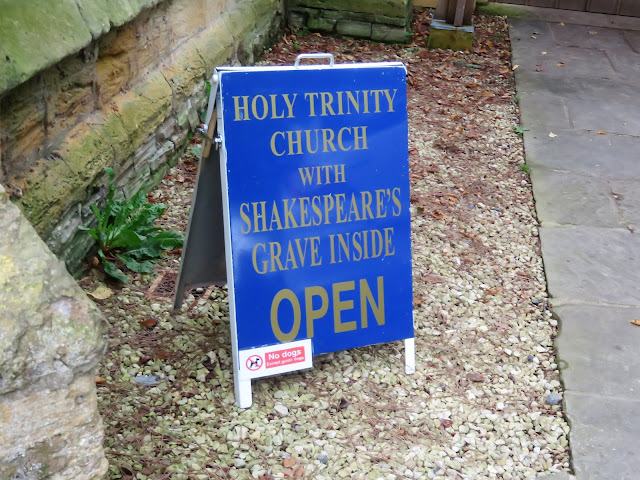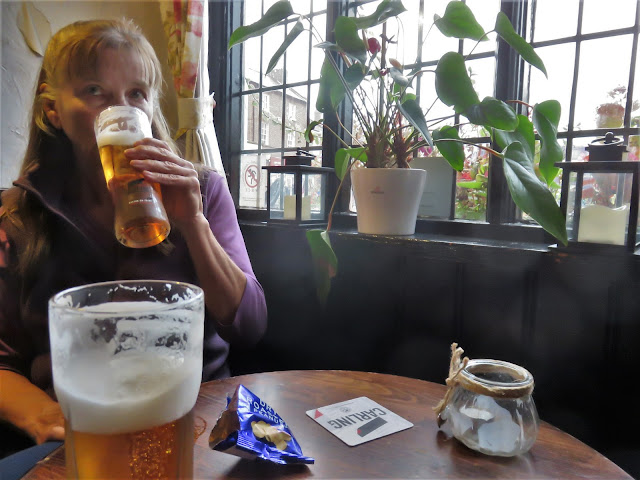UK
Trip, Days 17-18, York, 9/28 -9/29
Fall was definitely in the air! Many trees were already
changing colors by the time we made it to York, and we were seeing many
different shades of red, gold, green, purple, and yellow. The train ride from
Stratford-Upon-Avon to York was very long, about 4 hours. I was so happy to
finally get here. Our hotel, Queens Hotel, was right in the city center, and
our third story room overlooked the River Ouse (rhymes with “goose”). Several
restaurants are situated on the bank across the river, with outdoor seating,
and the customers and revelry last late into the night. The city has a busy,
positive, and vibrant feel.
The city center of York is enclosed by ancient medieval
walls, known simply as The Roman Walls. With the most complete construction of
these type of defensive walls in all of England, this is a very popular place
to walk, measuring approximately 2.5 miles around, and enclosing ~263 acres.
Over the two days we were there, we walked over most of it.
Although
there is plenty of stained glass in the endless churches we visited while in
the UK, for some reason we seemed to see more than average in York. We saw
beautiful examples in the Catholic Church of St. Wilfrid, which the Catholics
call the “Mother Church of the city of York”. We accidentally stumbled upon St.
Olav’s Church (pronounced “Olive”), something we found as we were walking
around York on our own. Part of The Church of England, it is situated within
the walls of St. Mary’s Abbey, and is dedicated to St. Olaf, the patron saint
of Norway.
St.
Mary’s Abbey is a ruined Benedictine abbey, but was once the richest abbey in
the north of England. It lies in what now are the Yorkshire Museum Gardens.
Another unlooked-for visitation, we sort of wandered into this site
accidentally and strolled the grounds.
Clifford’s
Tower is actually what is left of the now-ruinous keep (a type of fortified
defensive tower) and largest remaining part of York Castle. One of the
best-loved and prominent landmarks in York, the 11th century timber tower on
top of the earth mound was burned down in 1190, after York’s Jewish community,
some 150 strong, was besieged here by a mob and committed mass suicide.
York Minster, a cathedral church, is one of the finest
medieval buildings in Europe. The official name of this magnificent structure
is the “Cathedral and Metropolitical Church of St. Peter in York”, and is part
of The Church of England. This was just a stunning building, both inside and
out. It was really hard to get pictures that captured what we were seeing. Our
necks hurt from so much craning and our jaws were tired form so much “oohing”
and “aahing”. Very much worth the visit.
This was the last city we visited in England, moving from
here to our last two stops in Edinburgh and Glasgow, Scotland.





























































































